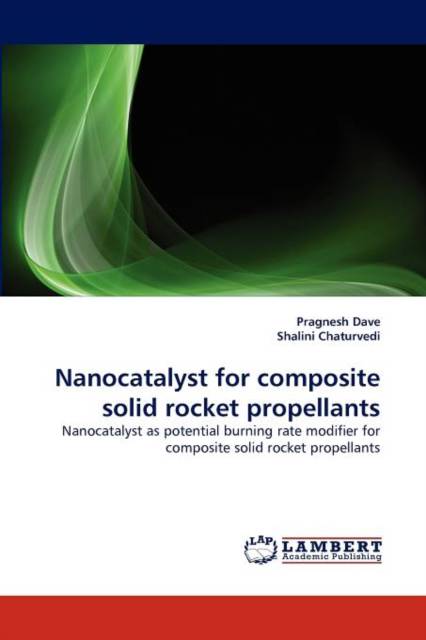
- Afhalen na 1 uur in een winkel met voorraad
- Gratis thuislevering in België vanaf € 30
- Ruim aanbod met 7 miljoen producten
- Afhalen na 1 uur in een winkel met voorraad
- Gratis thuislevering in België vanaf € 30
- Ruim aanbod met 7 miljoen producten
Zoeken
Nanocatalyst for composite solid rocket propellants
Nanocatalyst as potential burning rate modifier for composite solid rocket propellants
Pragnesh Dave, Shalini Chaturvedi
Paperback | Engels
€ 66,45
+ 132 punten
Omschrijving
The nanosciences have recently evolved as a major research direction of our modern Society resulting from an ongoing effort to miniaturize at the nanoscale processes that currently use microsystems. Towards this end, it is well admitted that the bottom - up approach should now replace the classic top - down one, a strategic move that is common to several areas of nanosciences including opto - electronics, sensing, medicine and catalysis . The latter discipline certainly is the key one for the development of starting chemicals, fine chemicals and drugs from raw materials. Exciting new opportunities are emerging in the field of catalysis based on nanotechnology approaches. A new understanding and mastery of catalysis could have broad societal impacts, since about 80% of the processes in the chemical industry depend on catalysts to work efficiently. Efforts in surface science have led to the discovery of new heterogeneous catalysts.
Specificaties
Betrokkenen
- Auteur(s):
- Uitgeverij:
Inhoud
- Aantal bladzijden:
- 84
- Taal:
- Engels
Eigenschappen
- Productcode (EAN):
- 9783838377216
- Verschijningsdatum:
- 15/11/2010
- Uitvoering:
- Paperback
- Afmetingen:
- 150 mm x 220 mm
- Gewicht:
- 144 g

Alleen bij Standaard Boekhandel
+ 132 punten op je klantenkaart van Standaard Boekhandel
Beoordelingen
We publiceren alleen reviews die voldoen aan de voorwaarden voor reviews. Bekijk onze voorwaarden voor reviews.








